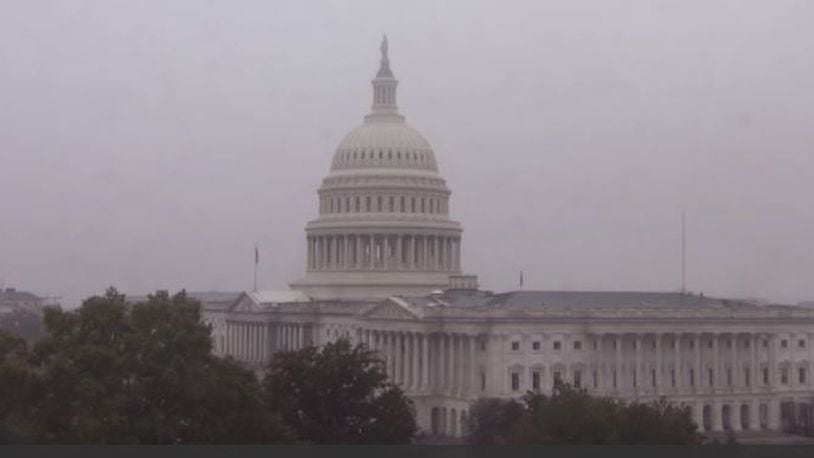1. If 1986 tax reform was the tortoise, then 2017 is a hare. The Tax Reform Act of 1986 took more than just 1986. It started with a nationwide address from President Reagan in May of 1985, which was followed by an actual bill from the White House, then months of hearings on specific tax considerations by committees in both the House and Senate. It took the House three months to go from draft bill to a vote on the floor in late 1985. It took the Senate almost 6 months to get a bill done in 1986. Then there were several months of intense bargaining between the House and Senate to get a final bill in October 1986 to the President's desk. In 2017, the GOP is all about speed. Republicans kept the bill a secret until just last week. Now, they want to go from a draft bill (unveiled on November 1) to a bill signing ceremony at the White House (by Christmas) in about seven weeks. President Trump says he wants a bill on his desk this year. Seven weeks versus 13 months. That would be a major departure from the extensive, and lengthy tax debate in 1986.
2. Partisan 2017 versus bipartisan 1986. The setup was different in 1986. Democrats controlled the House, while the GOP was in charge of the Senate and White House. Democrats took the lead on the House bill, but needed the intervention of President Reagan to convince some Republicans to help it get through the House when the bill initially derailed in early December of 1985. After more near-death experiences in the Senate, the vote on the Senate bill was 97-3. You read that right. In the end, 292 House members voted for the final tax reform bill, along with 74 Senators. President Trump can only dream about numbers like that. It is possible that he could win over a few Democrats in the House and Senate, but the numbers will be very small, as maybe a handful of Blue Dog Democrats in the House (there aren't many left) will join up, and maybe a couple of Red State Democrats in the Senate could vote 'yes.' But right now, this is not the 1986 tax bill.
3. 2017 is definitely not my father's 1986 tax bill. Back in 1986, my father was part of "Gucci Gulch," the army of tax lobbyists who waited outside the House Ways and Means Committee, and the Senate Finance Committee, as the Tax Reform Act was put together. He did enough leg work - as others did - to secure the addition of a number of special interest provisions in that bill. "Special rule for Financial Corporation," was the hidden title about one of the provisions that he was able to secure - and it wasn't the only one. If you go through that 1986 law, you see all sorts of mentions of companies incorporated in Delaware, or examples like a company that has a "principal office in New Brunswick, New Jersey, or had "5 3/8 percent Swiss franc bonds due in 1994," or had "executive offices in Philadelphia, Pennsylvania" - all of those were "rifle shot" provisions dealing with one business. So far, the 2017 tax reform effort is not filled with those items. So far.
4. State and local tax deduction - a familiar fight. Back in 1986, the initial idea was to use tax reform to get rid of the state and local tax deduction, as Republicans are trying to do in 2017. But the effort proved too politically toxic 31 years ago. So far, the provision is still in the bill, as it accounts for a big chunk of money that would go to offset the cost of tax cuts in other parts of the GOP plan - but the move is raising opposition among GOP lawmakers in higher tax states like New York and New Jersey. "It's a geographical redistribution of wealth," said Rep. Lee Zeldin (R-NY), one of a group of eastern Republicans who have been trying to negotiate an agreement with GOP leaders on how to deal with new limits on the state and local tax deduction. One other notable similarity - back in 1986, Gov. Mario Cuomo (D-NY) lined up against the idea of getting rid of that state and local write-off. His son is now doing the same in 2017.
5. Echoes of Trump in opposition to 2017 tax bill. It isn't hard to go back and find scorching criticism of the 1986 tax law from - businessman Donald Trump. "This tax act was just an absolute catastrophe for the country, for the real estate industry," Mr. Trump said at a November 1991 hearing. Fast forward to 2017, and there are business groups who say this GOP tax plan could harm the real estate industry and cause economic troubles as well. "We have always said that tax reform – a worthy endeavor – should first do no harm to homeowners. This tax framework misses that goal," said the head of the National Association of Realtors last week, worried about limits on the mortgage interest deduction, changes in how long you can own a house before getting a capital gains exclusion after a sale, and more. Go back and watch Mr. Trump's congressional testimony, and think about how some of those issues could ricochet into 2017.
You can read the current version of the GOP bill here.
More changes to the GOP bill are expected this week.
About the Author
